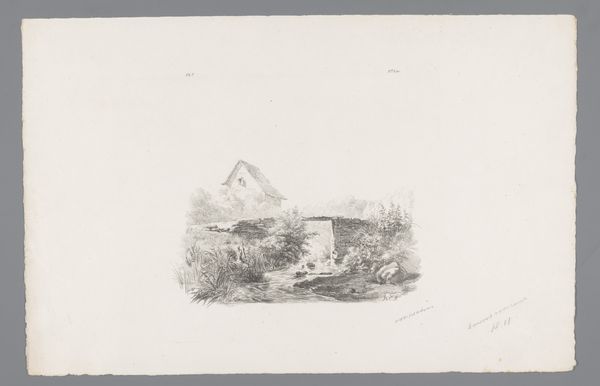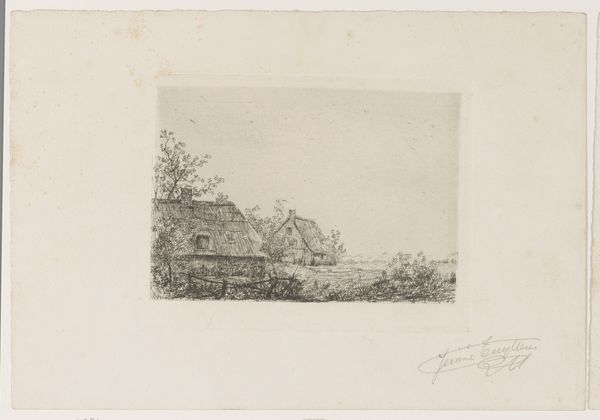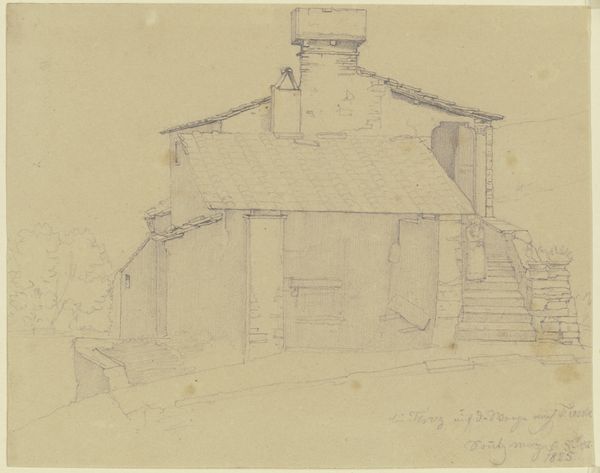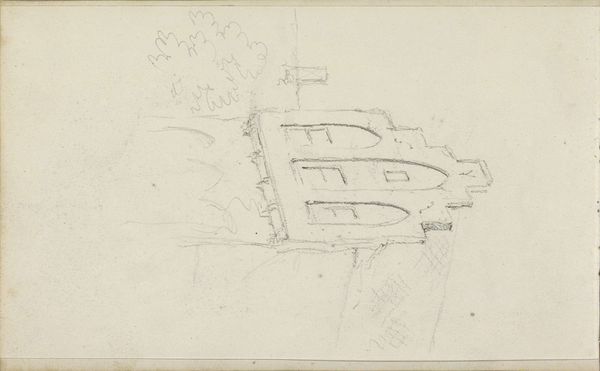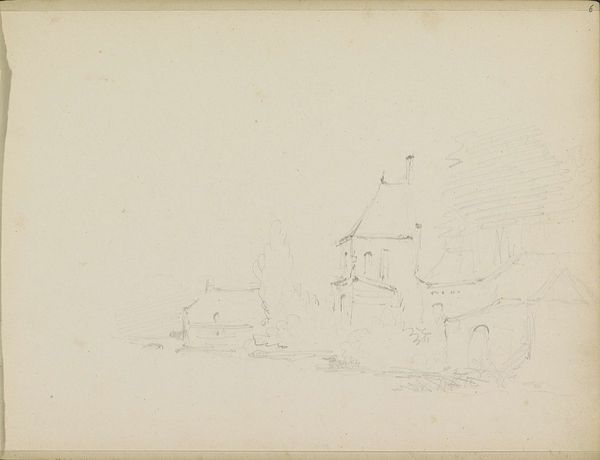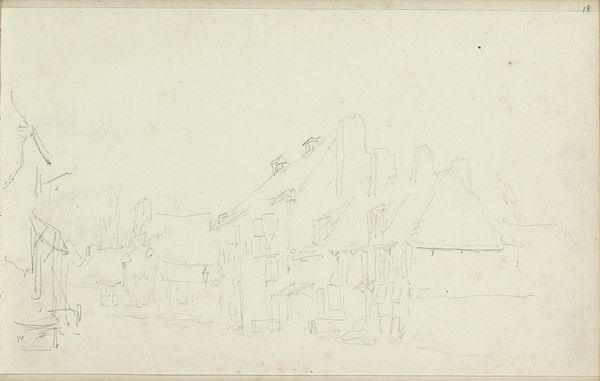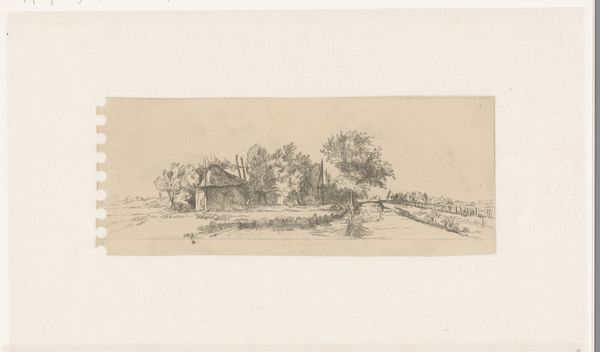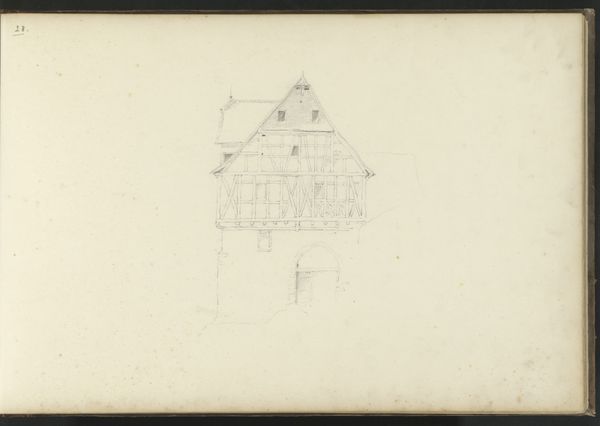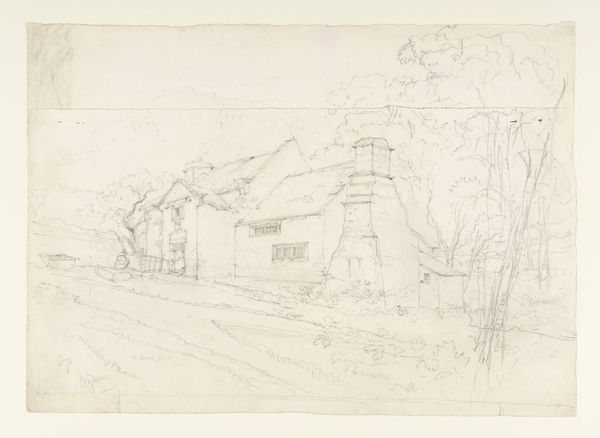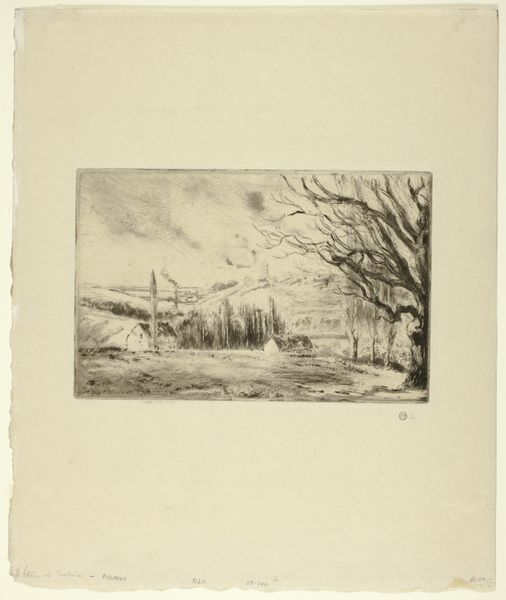
drawing, paper, pencil
#
drawing
#
landscape
#
paper
#
pencil
Dimensions: height 158 mm, width 298 mm
Copyright: Rijks Museum: Open Domain
Curator: It’s delicate, almost faded, like a half-remembered dream. Editor: That's a great way to put it! This is “Landhuis met een berceau over het tuinpad” by David Alphonse de Sandoz-Rollin, made sometime between 1750 and 1809. It's a pencil drawing on paper. It portrays a country house with a covered bower or arbor over the garden path. What else do you see? Curator: There’s something so fleeting about the pencil strokes, like he was trying to capture a feeling more than an exact image. A sort of pre-photographic memory, perhaps? The light is remarkable, diffused yet bright... Evocative of a specific time of day. Maybe late afternoon? Editor: That resonates. These types of country estates represented a very specific type of privilege. I think about who lived here, what kind of power structures were at play in this serene, pastoral setting, and how that informs what we’re seeing. What is shown, but more importantly, what is being omitted? Curator: Mmm, I do tend to fall for idyllic imagery, seduced by the promise of tranquility. Still, look at how the arbor is almost caressing the house; like the garden is in a constant dance with the building itself. It brings the outside world in... softens boundaries, perhaps? Editor: And notice the size of the home compared to the overall landscape... It makes the structure look rather humble. Sandoz-Rollin lived in a period marked by shifting social structures; does this modesty speak to the anxiety of aristocratic decline? Was the artist trying to appear in touch with a common man? Curator: Perhaps. Or it could simply reflect a deep connection with nature. One wishes to dwell inside and to merge, an extension rather than a blatant imposition. We do bring our biases into how we view things; no doubt the artist was as fallible as the rest of us. Editor: Well, these drawings certainly present interesting questions, and looking at them helps me contextualize not only what these structures may have meant at the time but also what the legacy of them carries forward. Curator: And for me, it’s the quietude. These estates offered solitude that allowed time for personal exploration and introspection; an opportunity few experienced during that era. So for a moment I want to cherish this drawing for reminding me that inner peace can exist, too. Editor: Indeed; finding the dialectical relationships is what excites me.
Comments
No comments
Be the first to comment and join the conversation on the ultimate creative platform.
